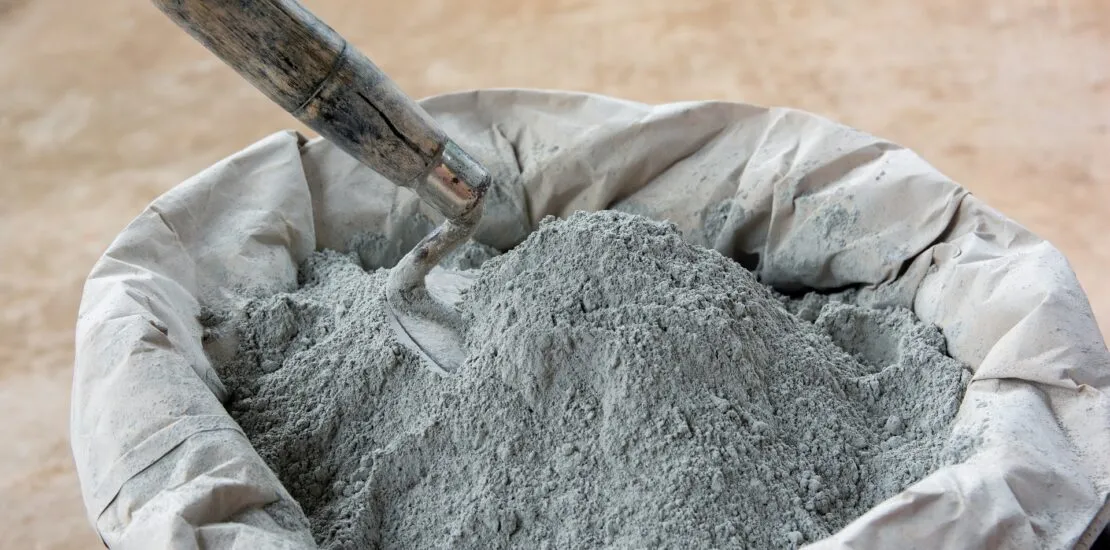Portland cement is the most commonly used material in construction, forming the foundation for concrete, mortar, and many other essential building materials. The manufacturing process of Portland cement is a complex and precise operation that transforms raw materials into a finely ground powder with remarkable binding properties. In this article, we’ll break down the Portland cement manufacturing process, explore the critical role of rotary kilns, discuss how cement plants operate, and highlight how Cenemtl supports this industry with high-quality equipment.
1. What Is Portland Cement?
Portland cement is a type of hydraulic cement that hardens when mixed with water, thanks to a chemical reaction called hydration. Known for its durability, compressive strength, and versatility, Portland cement is used in various applications, including bridges, buildings, roads, and more.
2. Key Raw Materials in Portland Cement Production
The primary raw materials used to manufacture Portland cement include:
- Limestone: The primary source of calcium carbonate.
- Clay and Shale: Provide silica, alumina, and iron oxides.
- Gypsum: Added during the grinding phase to control cement setting time.
3. Overview of the Portland Cement Manufacturing Process
The manufacturing process involves five main stages:
a. Raw Material Extraction and Preparation
Raw materials like limestone and clay are extracted from quarries and transported to the cement plant.
- Crushing and Grinding: The materials are crushed into smaller pieces and ground into a fine powder.
- Blending: The raw materials are proportionally mixed to achieve the desired chemical composition.
b. Raw Meal Preheating
The blended raw materials, now called raw meal, are preheated using heat from exhaust gases in a preheater tower.
- Energy Efficiency: Preheating saves energy by reducing the heat required for calcination.
c. Calcination in the Rotary Kiln
The raw meal enters the rotary kiln, a massive cylindrical furnace where the temperature reaches up to 1,450°C.
- Chemical Transformation: Limestone decomposes into lime (CaO) and carbon dioxide (CO₂), and the lime reacts with other materials to form clinker.
- Clinker Formation: Small grayish nodules called clinker are formed, which are cooled rapidly to stabilize their structure.
d. Clinker Grinding
Clinker is mixed with gypsum and ground into a fine powder to produce Portland cement.
- Fineness: The particle size of cement influences its strength and hydration properties.
e. Packaging and Distribution
The final product is packaged in bags or distributed in bulk to construction sites.
4. The Role of Cement Plants in Manufacturing
Cement plants are specialized facilities equipped with state-of-the-art machinery to efficiently produce Portland cement.
Key Components of a Cement Plant:
- Quarry Operations: Supply raw materials for production.
- Kiln Systems: The heart of the plant, where calcination and clinker formation occur.
- Grinding Units: Ensure the cement meets fineness and consistency standards.
Modern Innovations:
- Automation and data-driven systems optimize production and reduce energy consumption.
- Advanced cooling and preheating systems enhance efficiency.
5. Importance of Rotary Kilns in Cement Production
The rotary kiln is the most critical piece of equipment in Portland cement manufacturing.
How Does a Rotary Kiln Work?
- Structure: A long, cylindrical shell lined with heat-resistant bricks rotates slowly, ensuring even heating.
- Temperature Control: The kiln operates at extreme temperatures to facilitate chemical reactions.
- Continuous Process: Raw meal is fed from one end, and clinker exits from the other.
Advantages of Modern Rotary Kilns:
- Energy Efficiency: Advanced designs reduce fuel consumption.
- Versatility: Can process a range of raw materials and alternative fuels.
6. Cenemtl: A Trusted Brand for Rotary Kilns and Cement Equipment
Cenemtl is a leading manufacturer of rotary kilns and other cement production equipment, offering durable and efficient solutions for cement plants worldwide.
Why Choose Cenemtl?
- High-Quality Products: Cenemtl’s rotary kilns are designed for optimal performance, energy efficiency, and durability.
- Comprehensive Solutions: Offers equipment for every stage of the manufacturing process, from raw material preparation to grinding.
- Technical Support: Provides excellent after-sales service and expert guidance.
Cenemtl’s Rotary Kiln Features:
- Heat-resistant materials for longevity.
- Precision temperature control for consistent clinker quality.
- Adaptability for alternative fuels and modern production techniques.
7. Environmental Challenges and Sustainable Solutions
Cement production is energy-intensive and a significant contributor to CO₂ emissions. To address these challenges, manufacturers are adopting sustainable practices.
Sustainability in Cement Plants:
- Alternative Fuels: Utilizing biomass, waste-derived fuels, and renewable energy.
- Energy-Efficient Equipment: Rotary kilns and preheaters from Cenemtl minimize energy use.
- Carbon Capture and Storage (CCS): Emerging technologies aim to reduce carbon footprints.
Conclusion
The Portland cement manufacturing process is a meticulously designed operation involving raw material extraction, calcination, grinding, and packaging. Cement plants rely on advanced machinery, particularly rotary kilns, to ensure efficient production. Cenemtl’s expertise in manufacturing high-quality rotary kilns and cement equipment makes them a reliable partner for the industry.
As the industry evolves to meet environmental challenges, innovations in technology and sustainable practices will shape the future of Portland cement manufacturing, ensuring a balance between economic growth and environmental responsibility.
FAQs
1. What is the significance of rotary kilns in cement production?
Rotary kilns are essential for the calcination process, converting raw materials into clinker at high temperatures.
2. How does Cenemtl support cement manufacturers?
Cenemtl provides durable and efficient rotary kilns, grinding equipment, and expert support to optimize cement production.
3. What are the environmental challenges of Portland cement manufacturing?
The process is energy-intensive and produces CO₂ emissions. However, alternative fuels and carbon capture technologies are reducing the impact.
4. Why is clinker cooling important in cement production?
Rapid cooling stabilizes clinker’s chemical structure and improves its grindability.
5. How can cement plants improve energy efficiency?
By using advanced equipment like preheaters, energy-efficient rotary kilns, and waste heat recovery systems.



